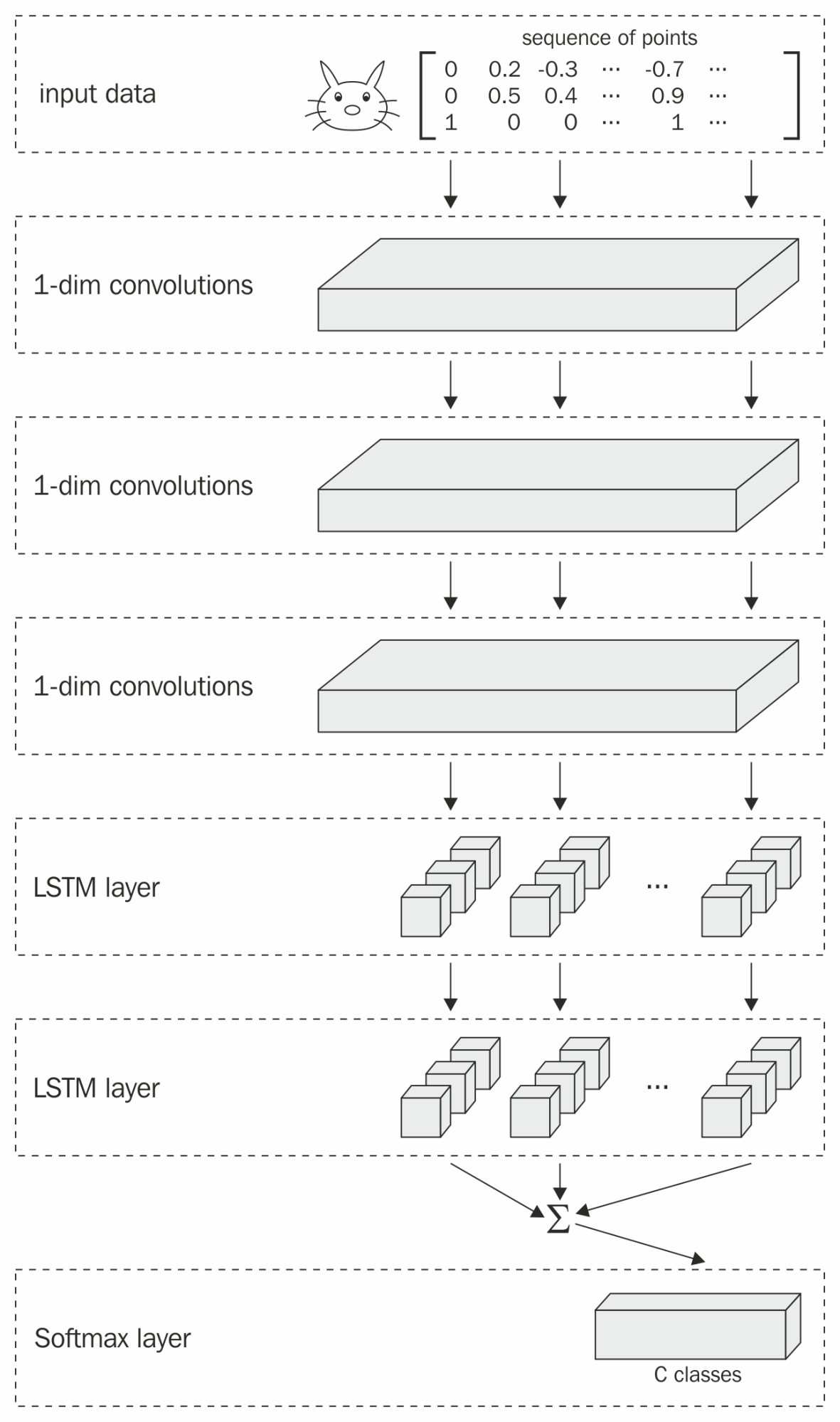Drawing classification – how it works
The drawing classification model built into the TensorFlow tutorial (https://www.tensorflow.org/tutorials/recurrent_quickdraw) first takes the user drawing input represented as a list of points and converts the normalized input to a tensor of the deltas of consecutive points along with information about whether each point is the beginning of a new stroke. Then it passes the tensor through several convolutional layers and LSTM layers, and finally a softmax layer, as shown in Figure 7.1, to classify the user drawing:

Figure 7.1: The drawing classification mode
Unlike the 2D convolution API tf.layers.conv2d that accepts a 2D image input, the 1D convolution API tf.layers.conv1d is used here for temporal convolution such as drawing. By default, in the drawing classification model, three 1D convolutional layers are used and each layer has 48, 64, and 96 filters, the lengths of which are 5, 5, and 3, respectively. After the convolutional layers, 3 LSTM layers...






































































